What Is IoT Connectivity and What Does It Look Like
The World of IoT Connectivity has become an inseparable part of daily living. Its flexibility and wide range of potential applications across industries have made it a valuable asset to organizations and individuals. As more enterprises rely on IoT connectivity, the number of connected devices has increased. By 2025, the expected IoT-connected devices worldwide will reach over 30.9 billion. With its increasing popularity and the value it can bring to organizations, it’s essential to have a clear idea of IoT and its practical applications.
Jump to
- What is IoT Connectivity?
- How Does IoT Connectivity Work?
- What is IoT Connectivity Management?
- Essential Elements of IoT Connectivity
- Types of IoT Connectivity Technologies
What is IoT Connectivity?
IoT connectivity is the term used to define how any IoT device connects to the IoT ecosystem. The term also describes the specific solutions used to power connectivity. Devices can range from factory devices like remote assistants, smart glasses, video cameras, and AGV (Automated Guided Vehicles) to personal devices such as smartwatches and fitness trackers. Connectivity is essential for IoT as it enables a collection of devices to become an intra-net – i.e., an interconnected series of devices that can communicate and exchange data.
Communication with the devices allows organizations to make data-driven decisions and generate revenue. The wide variety of applications for IoT connectivity technologies means that organizations can also choose to connect to IoT through a wide range of options. The newest cellular technology is 5G connectivity, which is significantly faster than its predecessor, 4G. Still, other criteria such as cost and power usage must be factored into the decision when choosing the connectivity with the best measures for your organization.
How Does IoT Connectivity Work?
IoT works by connecting the devices that make up its ecosystem to the cloud or any other central location, allowing them to communicate with the cloud and each other.
Once the devices have passed their data to the cloud, all the collected data is analyzed to provide actionable security, operational, or business recommendations. This data can also provide automatic responses to the devices, adjusting their functionality when triggered by specific actions without user input or any other human intervention.
If user permission or interaction is required, or if the user wants to check in on the system, they can do so through a control and management user interface. Any input sent by the user through this interface then makes the opposite journey, traveling from the user back to the original device to carry out the user’s instructions. Note that the user input can affect the functionality of multiple devices, not just the ones that sent the data.
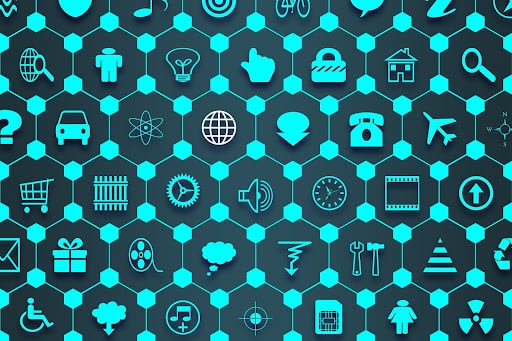
What Is IoT Connectivity Management?
IoT connectivity management streamlines the management of IoT devices. The management process can quickly become overwhelming when working with many connected devices. A well-designed management platform can streamline and simplify the process and reduce the workload for organizations deploying or scaling their IoT operations.
The ideal cellular IoT management platform should:
- Support any type of IoT use case
- Enable easy control of millions of devices through a simple user interface and feature-rich API
- Support a flexible platform model that accommodates your organization as it grows
- Support all relevant cellular technologies, including 2G-5G, NB-IoT, and LTE-M, and overcome all legacy network variabilities
- Detect, protect and correct security and operational problems in real-time
- Allow platform customers to self-manage their devices with no telco expertise
5 Essential Elements of IoT Connectivity
Connectivity is a broad topic that covers a lot of ground. Therefore, knowing which factors are most important to consider when making connectivity decisions can take time and effort. To simplify this challenge, we’ve collected some of the foundational concepts to keep in mind:
1. Bandwidth
Bandwidth needs depend on the amount of data you want to send at a time. In many IoT projects, IoT devices such as smart water meters only need to transmit small quantities of data periodically, every predefined time interval. High bandwidth is required in other cases, such as in surveillance cameras.
2. Reliability
Unlike bandwidth, reliability is critical regardless of your organization’s size, goals, or the lifespan of your IoT network. Reliability means achieving as little downtime as possible, as the more downtime your network has, the less your devices can exchange information. There are projects where reliability is paramount, such as remote surgery or autonomous cars, and others where reliability is less critical, such as smart electricity meters.
3. Cost
Because IoT projects are often large-scale and implemented throughout the organization, connectivity can quickly become a significant expense. Therefore, when selecting a provider, ensure that you get end-to-end connectivity, including all Capex and Opex costs, at a price that meets your needs and doesn’t compromise reliability. If you purchase the connectivity wholesale (for a group of devices) and not by licensing individual devices, the price gets significantly lower, and you can cut the connectivity costs by 75%.
4. Power Consumption
Whether your devices are rechargeable or rely on being plugged into an outlet, power consumption plays a vital role in the connectivity you’re willing to invest in each project. The location of your device, its battery size, and usage type will all impact your choice of connectivity for your projects. Power consumption is essential for devices spread all over distant places, for example, in smart farming cases, to reduce on-field manual battery replacement visits.
5. Range
The range is the distance from the devices to the network. It is essential to understand your project’s requirements and whether they need long or short-range technologies. Short-range technologies such as Bluetooth and Wi-Fi can send large amounts of data over short distances of up to 100 meters. While they are helpful for everyday tasks, large commercial applications may require long-range technologies such as LTE-M and NB-IoT. These technologies are part of the LPWAN (Low power wide area networks) category and can cover long distances such as 100 km in NB-IoT.
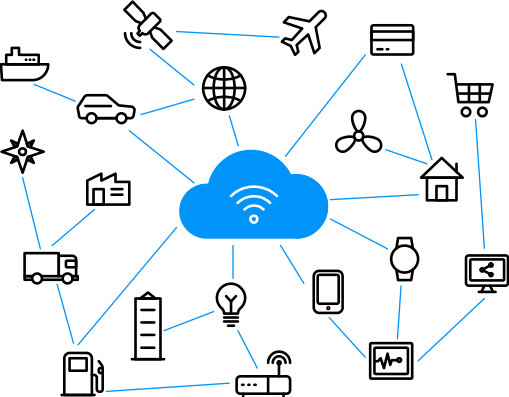
5 Types of IoT Connectivity Technologies
Various network solutions are used based on their power consumption, bandwidth use, and range. Since IoT projects differ in their requirements and many use different connectivity options, choosing the right technology matters. We’ve listed some of the most popular IoT connectivity technologies below:
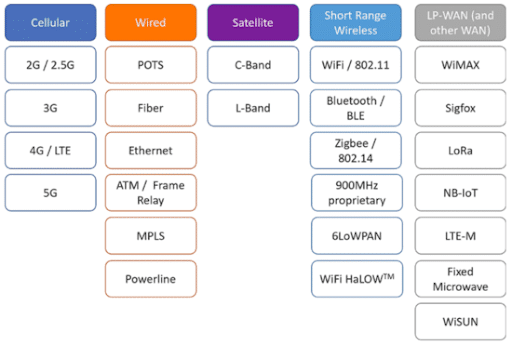
1. WiFi
WiFi is a Short Range wireless connectivity protocol. WiFi connectivity is suitable for short-range local connectivity. WiFi Networks support the digital transformation of initiatives of enterprises with benefits such as faster time to market, improved operational efficiency, and enhanced customer experience.
However, using WiFi connectivity has to be carefully planned for sufficient capacity and coverage, as it has high power usage and covers very short distances. Its location and proximity detection capabilities aren’t the most reliable, and WiFi solutions are more vulnerable to security and data privacy attacks. Thus, WiFi may not be a good fit for all IoT projects.
2. Bluetooth
Bluetooth is a Short Range wireless connectivity protocol created in 1994 as a solution for wireless headsets. It is now typically used for low-power devices within close range, as Bluetooth’s range is very low. Devices need to support a Bluetooth connection, and in most cases, users require a secondary device to bridge the data to an internet connection. A mobile phone is generally used for this purpose, but dedicated gateways are also popular for fixed applications such as domestic health monitoring.
Bluetooth Low Energy (BLE) is a variant of the Bluetooth Classic created with IoT applications in mind. It enables communication between connected devices over a relatively short range, even when running low on power. This can help IoT devices conserve energy.
Even though Bluetooth’s bandwidth is low, it still has many IoT applications, particularly for smart home and smart city projects.
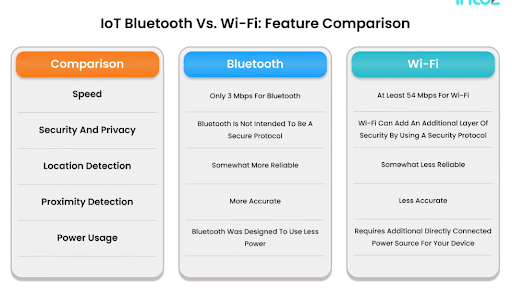
3. Satellite
Satellite technology enables communication between various points on earth through satellites. Satellite technology has come a long way since the first artificial satellite was launched in 1960, and it has numerous benefits for IoT, particularly regarding its coverage.
Satellite IoT can reach devices with limited to no access to terrestrial networks, making it ideal for large projects requiring connectivity in remote or unreachable areas such as the middle of the ocean. It can also be used as a hybrid model, serving as a backup in case terrestrial IoT connectivity drops. Despite its impressive coverage, satellite technology can be expensive and isn’t yet widely used for IoT.
4. LoRaWan
LoRaWan is an architecture network that functions on LoRa technology. LoRaWan is the protocol, while LoRa is the physical layer that enables communications. LoRaWan is similar to cellular technologies in that LoRa-based devices are connected to a local gateway, which sits between the devices and the server.
LoRaWan offers long-range and coverage of up to 15km. It’s also low power, and the batteries of devices using this technology can last ten years or more. Plus, it can support thousands of devices. These features make LoRaWan a good fit for smart city use cases such as smart parking and waste management, as smart city applications require many devices to be connected over long distances. However, getting planning permissions and setting up LoRaWan infrastructure can be challenging, expensive, and time-consuming. Plus, you may suffer data losses and poor connectivity performance if too many devices are connected or many networks operate in the same area. LoRaWan security is also less robust than cellular security. While LoRaWan is safe by design, the network and devices must be adequately protected to avoid vulnerabilities.
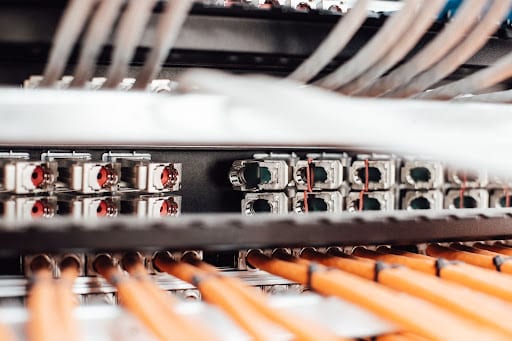
5. Cellular
Cellular IoT is the technology that connects physical objects to the Internet utilizing the same cellular network currently used by smartphones. In other words, this technology can connect IoT devices using existing mobile networks. Thus, it eliminates the need to invest and develop a separate dedicated network infrastructure for IoT devices.
Thanks to significant investments in developing cellular networks in most countries, mobile users enjoy functional cellular connectivity at all times. Cellular IoT enablement uses cellular networks, including 2G, 3G, 4G/LTE, NB-IoT, LTE-M, or 5G, for connecting devices like streetlights, smart farming sensors, and healthcare equipment.
The latest standard, 5G, offers higher speed and low latency and supports significantly more connected devices (1 million per square kilometer). The Cellular IoT technology market is expected to be worth $5.31 billion by next year.
Its existing large-scale infrastructure means that most of the management responsibilities lie in the hands of the IoT system operator rather than an onsite connectivity manager. Therefore, cellular IoT is ideal for organizations aiming to connect devices across geographic locations in areas with guaranteed and reliable cellular coverage. The opportunity to manage connectivity remotely using an IoT Connectivity Management Platform also enables greater efficiency, reduced business costs, and higher security.
Aside from remote IoT connectivity management, Cellular IoT also offers extensive coverage, which is essential for businesses covering various geographic areas. Moreover, cellular IoT comes in multiple categories, each offering different benefits in terms of range, speed and bandwidth, so enterprises can select the one that suits their business’s needs.
Another critical advantage is the built-in security in cellular connectivity, which is the most extensive of all the other connectivity solutions. This is especially true in the 5G technology.
Key takeaways
IoT has transformed the way organizations operate by offering unique insights into how devices and employees function and allowing leaders to make decisions driven by data gathered in real-time. IoT’s versatility has resulted in all industries choosing to implement it in one way or another, and it has quickly become an essential part of any organization. With so many devices and types of connectivity, ensuring IoT devices remain secure is now more critical than ever. Solutions such as FirstPoint can help you manage your IoT connectivity while protecting your devices against external attacks and mitigating IoT’s natural vulnerabilities.
The post What Is IoT Connectivity and What Does It Look Like appeared first on FirstPoint.
*** This is a Security Bloggers Network syndicated blog from Mobile & Cellular Cyber Security Blog Posts and Articles - FirstPoint authored by Shiri Smid. Read the original post at: https://www.firstpoint-mg.com/blog/what-is-iot-connectivity/





